When you visit our recently opened exhibition John Sloan and His Students, on view upstairs in Galleries 11 and 12, I hope you note the wide variety of work by women. Sloan’s female students are well represented by paintings, prints, and drawings, and they match or outnumber the men in photographs as well. These numbers reflect the student body and the Board of Control at the Art Students League during Sloan’s years there, between 1916 and the 1930s.
Women have been a vital presence at the League throughout its 150 years of educating artists in New York. The League’s founders include the artist Helena de Kay Gilder, who illustrated for The Century magazine. The school’s founding documents set out a president, two vice presidents (one male, one female) and four additional members (two male, two female), ensuring representation of women on the managing board. However, while women were a substantial portion of the student body, female instructors remained relatively rare until well into the 20th century, and the League wouldn’t elect its first woman president until 1968. This too is reflected in the show, where one section is dedicated to portraits of instructors—Sloan, Homer Boss, and Kenneth Hayes Miller.

Classroom and lunchroom scenes by Peggy Bacon show the more balanced population of students. Bacon was one of Sloan’s most notable pupils, gaining fame for her caricatures of famous folks in The New Yorker and Vanity Fair by the 1920s. Publishing was always central to her interests. At the League she produced a short-run magazine, Bad News (also in the show!), which featured her caricatures, and she would go on to illustrate over 60 books, many of which she also wrote. Her early etching John Sloan’s Lecture reveals her ability to capture atmosphere, expression, and personality in only a few lines: Sloan gestures broadly as he critiques the works hung before him, while his pupils demonstrate a range of attitudes, from rapt attention to bored distraction. Bacon built a career as an artist and her work was shown in galleries and collected by museums in her lifetime.
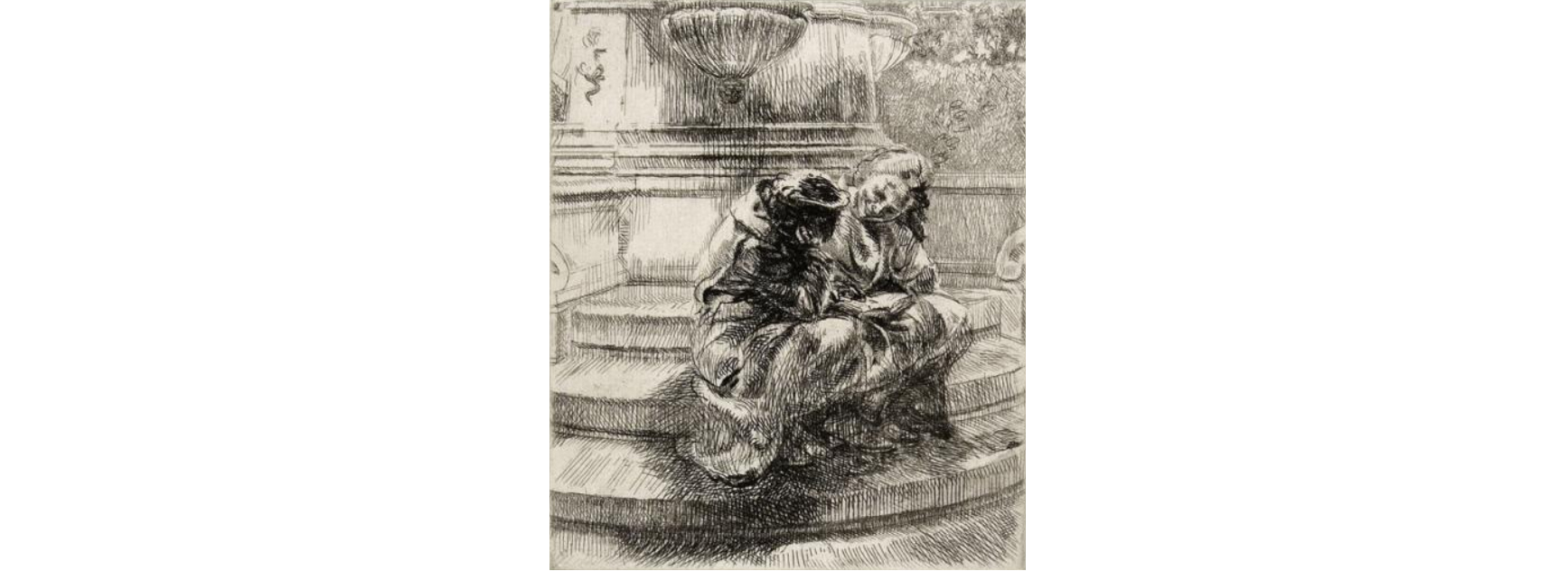
Isabel Bishop was similarly successful. At the League Bishop studied with Sloan and Kenneth Hayes Miller, developing a deep interest in portraying city life like Sloan. She trained her eyes on her neighborhood around Union Square and 14th Street. Bishop’s 1932 painting, Dante and Virgil in Union Square, is always on view at DelArt, and this exhibition highlights her etchings of young women in the urban arena.
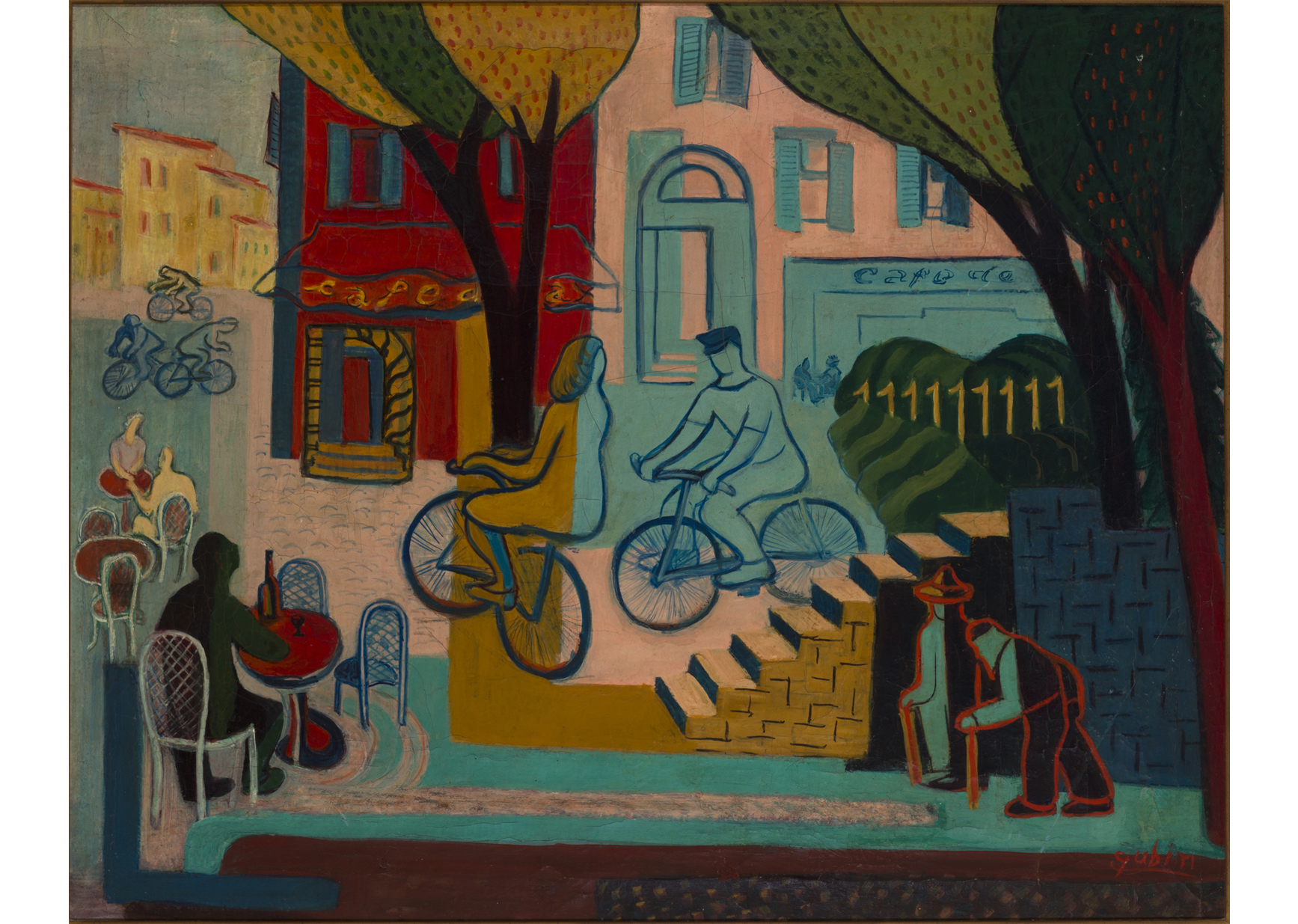
John Sloan and His Students also features work by Selma Gubin and Doris Rosenthal, who had successful artistic careers in the mid-20th century but aren’t as well known today. DelArt has significant paintings and drawings by these women that demonstrate a fusion of modern form and recognizable subject matter that was broadly popular in the 1930s and ’40s. Gubin’s delightful street scene depicts cafes and cyclists with flattened forms and bold colors. Hung nearby, the rhythmic and repeated forms of Rosenthal’s hunched students reflect her experience as a teacher.
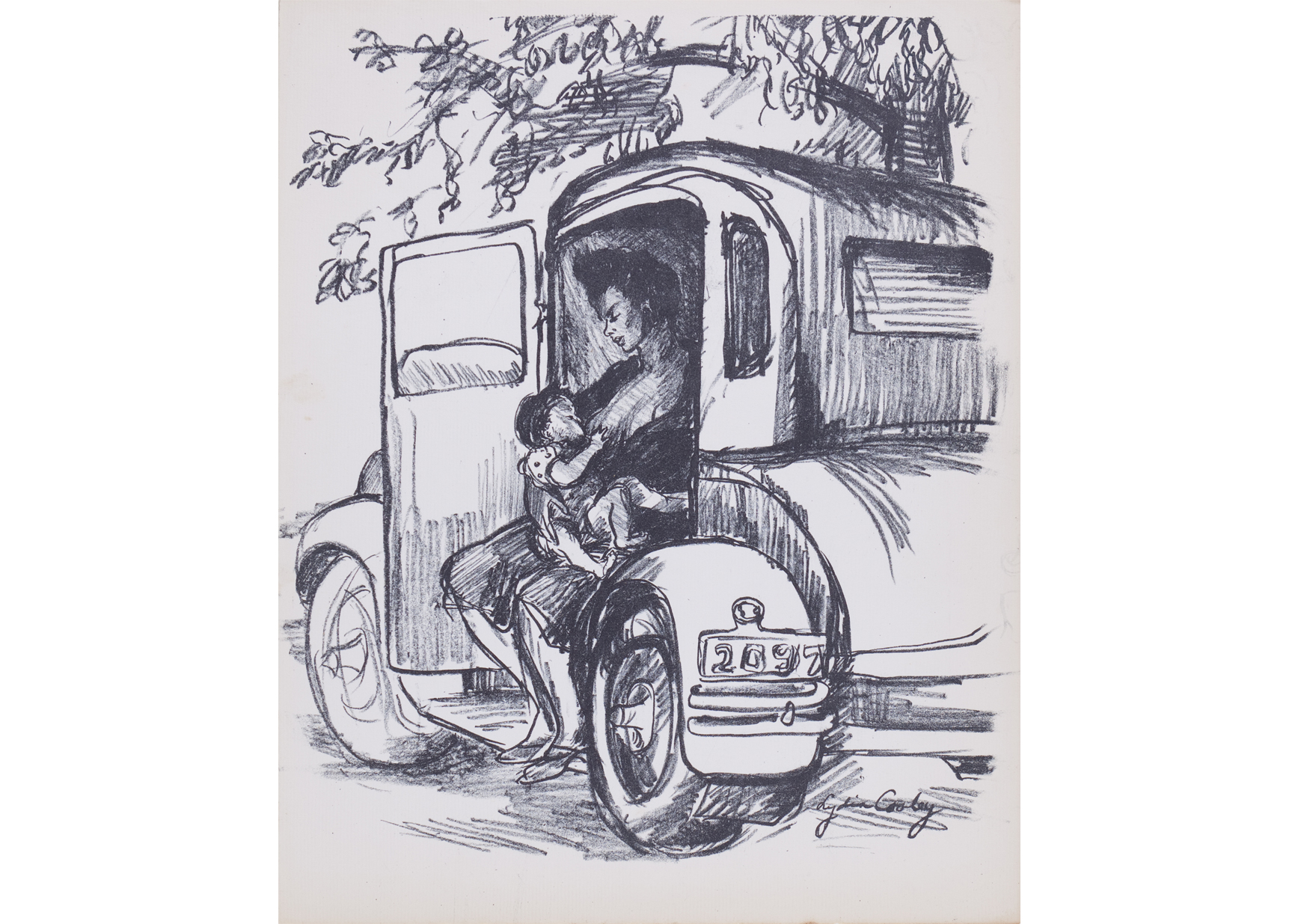
The galleries also feature the works of Lydia Cooley and Esther Goetz, artist-illustrators who assisted Don Freeman (Cooley’s husband) with his magazine Don Freeman’s Newsstand. Produced using lithography, the periodical came out three or four times a year and featured scenes of New York and portraits of artists about town, including Sloan. Freeman became famous for his children’s book, Corduroy, about a toy bear who loses his button, but Cooley’s work is rarely exhibited today. Her drawings and prints often focus on the lives of women and employ decisive lines to tell stories. The exhibition includes DelArt’s only work by Cooley, an intimate and modern scene of a mother seated in an automobile nursing her child.
This post is running long, and I’ve only mentioned a handful of the women represented in the show. Gallery 12 includes prints and drawings by Goetz, Marion Greenwood, Victoria Ebbels Hutson Huntley, Aline Rhonie, and Ethel Swantees—intriguing artists whose careers deserve greater attention—as well as a rare print by Angna Enters, who used her artistic skills primarily to design and create costumes and sets for her “dance-mime” performances in the 1920s and ’30s. (Sloan and Helen Farr documented these performances in dozens of drawings and prints.) One of these days, we’ll assemble an exhibition of and about Enters—she’s fascinating!
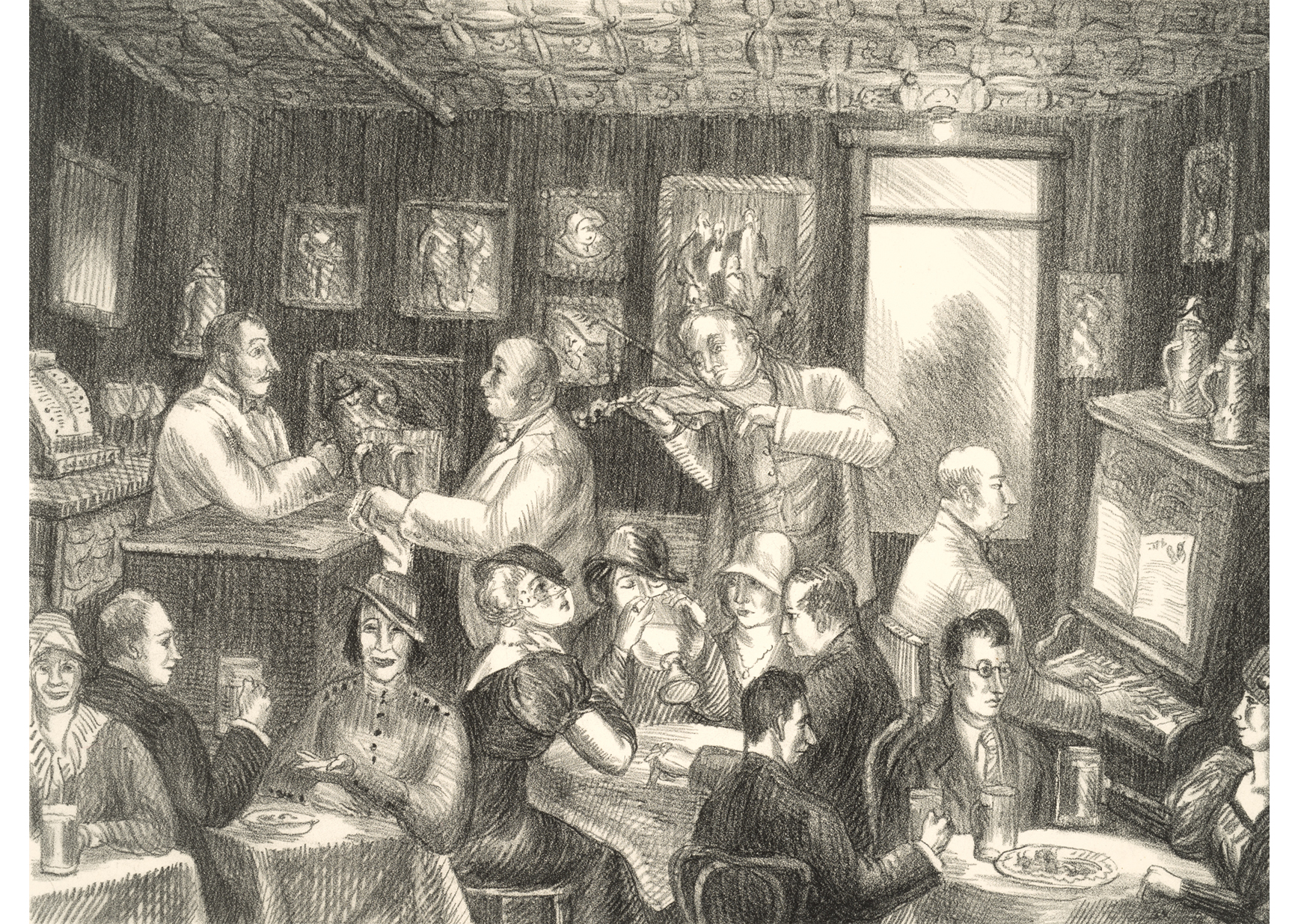
Finally, no discussion of Sloan’s students is complete without bringing up the work of Helen Farr, who studied with Sloan in the 1920s, and in 1944, after the death of his first wife, married him and stewarded his legacy. Helen absorbed her teacher’s interest in urban life and produced lively lithographs of New York scenes, like speakeasy bars and subway cars. During Sloan’s classes, Helen often took notes alongside her sketches. In the late 1930s, she worked with him to assemble her notes and the recollections of other students into Gist of Art, a book that recorded Sloan’s ideas and instruction for future generations. After Sloan’s death, Helen turned her attention to her husband’s legacy, placing his works with museums and dealers, preserving and annotating his papers, and funding exhibitions and publications about him. As a result, she produced and exhibited less of her own work, and it is only in the past decade that her work has begun to attract significant attention from museums and collectors. It is my sincere hope that this interest grows and embraces more of the talented women who studied with Sloan at the Art Students League.
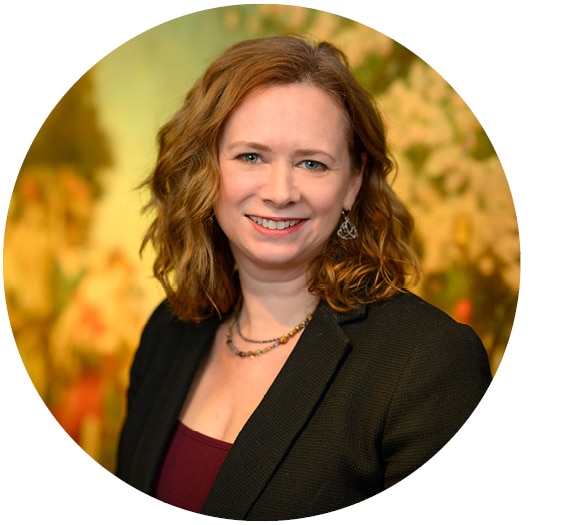
Top: Painting Class, Art Students League, 1930. Unknown photographer. Photograph. John Sloan Manuscript Collection, Helen Farr Sloan Library & Archives.


